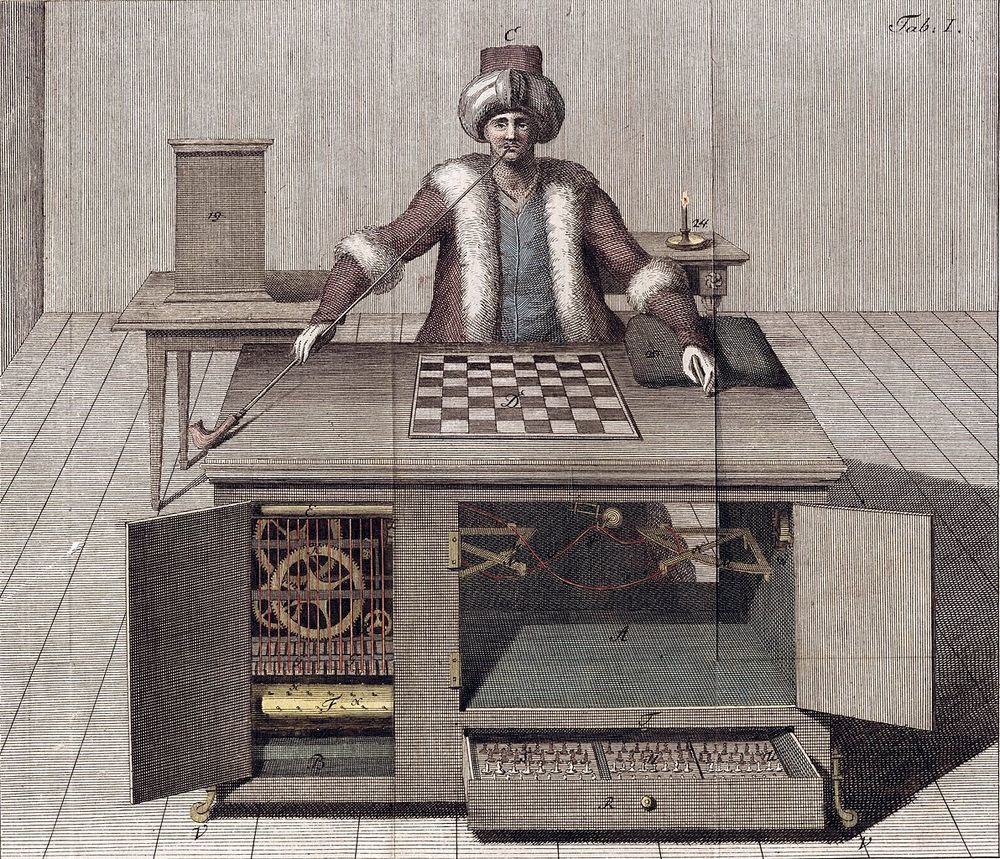An illustration from 1789.
A wooden mannequin dressed in Ottoman robes and a turban sat behind the box.
A game of chess would begin with the Turk making the first move.

Although the Turk lost the match, Philidor described the game as the most fatiguing game of chess ever.
As the automatons fame grew, people began to debate how it worked.
Poe concluded that the Turk had to be operated by a human.

There it sat at a corner utterly forgotten, until it was consumed by a fire in 1854.
An illustration from 1789 that tried to explain the illusions behind the Kempelen chess playing automaton.
However, the artist got both the position of the operator and the dimensions of the automaton wrong.

The Turk was a clever magician’s illusion.
This allowed the operator inside the machine to see which pieces moved where on the chess board.
Kempelen and his successor Johann Malzel picked up strong chess players to operate the machine at various times.
The next day an article appeared in theBaltimore Gazetteexposing the matter.
Despite the expose, fascination for the Turk did not wane.
A modern reconstruction of the Turk.
Ajeebs opponents included Harry Houdini, Theodore Roosevelt, and O. Henry.
Within a year, Cartwright would patent the prototype for a power loom.
In 2005, Amazon launched a new crowdsourcing service that employed human workers to perform such tasks.